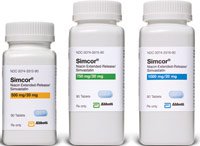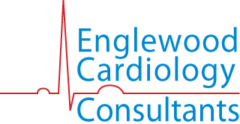
Should I Try to Raise my Good Cholesterol with Niacin or Niaspan?
Many of our patients have asked whether they should continue taking niacin, following reports from the AIM-HIGH and the HPS2-THRIVE studies that showed no benefit from niacin.
AIM-HIGH was a randomized study of 3,414 patients who were given Niaspan™ (niacin) or placebo on top of LDL cholesterol lowering therapy with Zocor™ (simvastatin).
The study was slated to run for 3 years, but it was stopped prematurely after 18 months because no benefit was found. At the time, many experts criticized AIM-HIGH for not having enough patients and not running long enough to have any possibility of showing a benefit for niacin. Most said that we should wait for the subsequent HPS2-THRIVE study before any conclusions were to be made about Niacin,.
Well, the HPS2-THRIVE was completed and confirmed the finding of no benefit from niacin that was seen in AM-HIGH. HPS2-THRIVE used niacin combined with laropiprant, a drug meant to reduce the annoying skin flushing often seen as a side effect from niacin. HPS2-THRIVE was a very large study of 25,673 patients. They were given niacin/laropiprant or placebo on top of routine statin therapy. All patients received Zocor™ (simvastatin), and if needed, Zetia™ (ezetimibe), to get their LDL cholesterol down.
The question HPS2-THRIVE meant to answer was whether niacin adds any benefit on top of standard therapy? It appears that the answer is… No.
Patients receiving the niacin/laropiprant combination had just as many deaths, heart attacks, strokes, stents and bypasses as those who took placebo. And on top of that, the patients on niacin/laropiprant had more nonfatal but serious side effects. These included skin, muscle, gastrointestinal, bleeding, infection, and diabetes related problems. There was even a trend towards more deaths in the patients given the Niacin/laropiprant combination.
A sub-analysis of patients with very low HDL cholesterol, the ones where one would expect the greatest improvement from niacin, also showed no benefit.
HPS2-THRIVE is likely to be the best study we will ever get on the value of niacin on top of standard statin therapy, and in that test niacin has failed. Standard statin treatment has consistently been shown to reduce the risk of death, heart attack, stenting, bypass, and strokes. The benefit of the statin drugs has now been reproduced in dozens of randomized double blind trials. After more than 30 years of widespread use, the advantages of taking statins continue to greatly exceed any known risk.
Niacin appears to have reached a dead end in routine treatment of high cholesterol and vascular disease. There could be instances where it may still be used in statin intolerant patients, but for the vast majority of patients, there seems to be no benefit to justify the significant risk of this drug.
